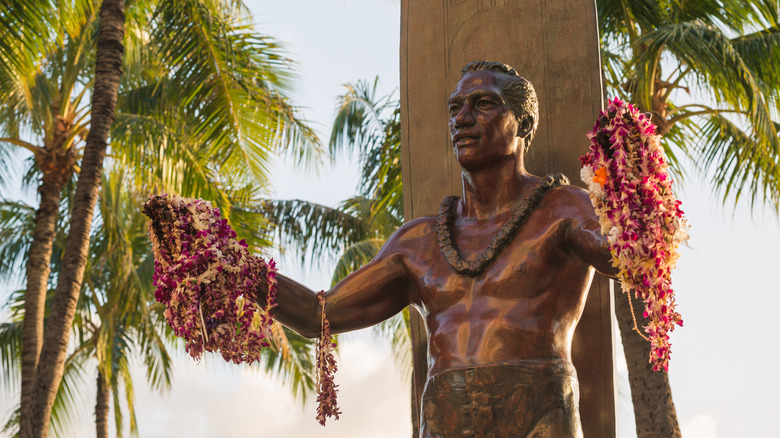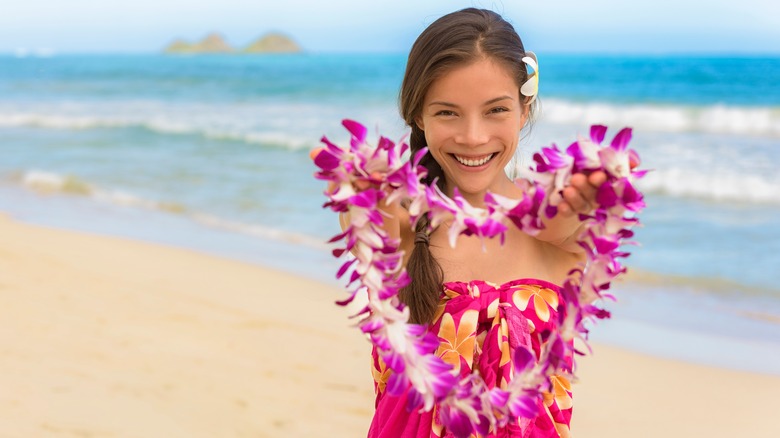The Best Thing To Do With An Old Hawaiian Lei
Whether you're visiting Hawaii to go snorkeling with sea turtles or to lounge on the island state's best beaches, you're almost guaranteed to be gifted a fresh flower lei. Or, you may be presented with an opportunity to make one, as many resorts, like the Fairmont Orchid, where "The Bachelorette" was filmed, and Koloa Landing Resort at Poipu on Kauai, offer lei-making classes for guests. But when it comes time to pack your bags and head for home, what should you do with that lei? Whatever you decide, one thing is certain: you shouldn't throw it away. Instead, you should find a way to return it to nature.
Meleana Estes, who wrote the book "Lei Aloha: Celebrating the Vibrant Flowers and Lei of Hawai'i," learned about them from her grandmother, a legendary lei maker who taught Estes how to make them as a child. A lei "starts from the soil, then you wear it, and then it goes back to the soil," Estes explained in an interview with Vogue. Some people choose to return their lei to nature by scattering the flowers from their lei in the ocean or in a park or even by burying or burning the flowers. Whatever you choose, don't forget to remove the string from your lei; not only is it not easily biodegradable, it could cause harm to wildlife.
You might see flower lei left on statues, like the bronze sculpture of Duke Kahanamoku, known as the father of surfing, along Waikiki Beach. It might seem like a nice way to pay respect to the Hawaiian legend as well as an option to avoid throwing the lei away — but it isn't actually a good idea, as the lei can damage the statue.
Lei have an important history in Hawaiian culture
It might seem like your fresh lei is ready to toss in the trash if the flowers have wilted. However, once you understand the deep cultural significance of lei, you may decide that you shouldn't discard it at all. After all, as Meleana Estes wrote in her book, "A lei is our ultimate expression of aloha."
Lei date back over a thousand years to when Polynesians originally arrived in the Hawaiian Islands. Since then, they've traditionally been made from natural items, like flowers, feathers, leaves, shells, and nuts. They were often used ceremonially, worn by royalty, and they were (and are) made, gifted, and worn with intention and love. In modern Hawaiian culture, lei are often used to mark special occasions, and they've been given to the islands' visitors for decades. There's even an annual Lei Day on May 1, with one of the major events in Honolulu's Kapiʻolani Regional Park — one of the oldest public parks in Hawaii — consisting of hula performances and lei-making competitions.
If you decide that you want to preserve your flower lei, start with getting it home safely. You'll need to store it in the fridge during your stay in the islands, ideally misting it with water inside a plastic bag or clamshell container. As soon as you get home, hang it somewhere dark to dry with the flowers upside down — you may have to cut your lei to accomplish this. Once it's fully dried, you'll have a special keepsake from your Hawaiian trip.

